Most .50 Beowulf hunters would be best served by a Maximum Point-Blank Range zero.
Maximum point blank range (MPBR) is the maximum range at which, if zeroed correctly, your bullet will strike somewhere within the kill zone 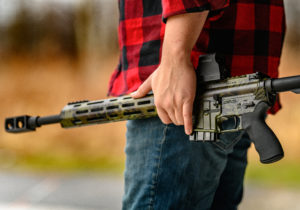 with the point of aim held dead on the center of the kill zone.
with the point of aim held dead on the center of the kill zone.
A maximum point blank zero (MPBZ) will work perfectly for almost all hunting conditions. Very few hunters ever fire at an animal at a longer range than the MPBR of their firearm.
The MPBZ is a simple concept once you understand how the exterior ballistics of a cartridge work. For those with a good working knowledge, we will jump right in and discuss the MPBZ. (If you want to brush up on how typical exterior ballistics, sighting systems, and zeros dictate the flight of a bullet, please jump to the Appendix at the end of this article to get a detailed explanation.)
When a typically zeroed rifle is fired, the bullet exits the barrel beneath the point of aim on the target, rises above the point of aim on the target, then drops below the point of aim and continues to drop. (If you understand why this happens, then read on. If you are unsure of why the bullet’s flight takes it from below to above to below again, I recommend reading the Appendix, before returning to the article.)
This zero is dependent on the individual firearm and load. If you use manufactures’ numbers, it will usually work fine. If you get precise data with a chronograph, that’s even better. You will need to know the bullet you are using (or its ballistic coefficient, depending on software), sight height above center of bore, muzzle velocity, size of the kill zone on the animals you are hunting, and will need a good ballistic calculator. At the bottom of this article are some ballistic charts that establish MPBZs for several factory loads.
Maximum Point Blank Zero (MPBZ)
The concept of zeroing for a maximum point-blank zero (MPBZ) is to zero the rifle at the exact range at which the bullet can travel the farthest while never rising above and before it drops below the vital zone of the animal being hunted (or the frame of your target if you are dealing with military or law enforcement targets) while holding your point of aim at center mass of the target.
If you are hunting deer, for instance (with a kill zone diameter of 10” on a large buck), the highest part of your arc must not rise more than 5″ above your point of aim. The range at which the bullet drops 5” below the point of aim is the maximum point blank range. If you zero so that the top of the arc rises to 4″ above the line of sight, then the range at which the bullet drops under 4″ below the line of sight is the maximum point-blank range of your rifle with that load, with a margin of 1″ on both top and bottom. Out to this distance, you can hold your sight directly on the vertical center of the animal’s chest/shoulder area, and your bullet will strike somewhere in the kill zone.
The range at which you zero your rifle to achieve this is your maximum point-blank zero (MPBZ) range.
Because this concept is unfamiliar to most people, many hunters are missing or wounding animals or having to guess holdovers when the animal is within the maximum point-blank range of their cartridge. They could hold directly on the correct point of aim if their rifles were zeroed appropriately.
Most .50 Beowulf owners zero their rifles at ranges that give them a very short point-blank range, severely limiting the capabilities of the cartridge.
Tips when considering a MPBZ:
The fastest, flat-shooting load or cartridge may not give you the longest point blank range. Sometimes a bullet that starts out fast and flat will bleed velocity and begin to drop more quickly than a heavier bullet that started out slower. (For example, comparing the same style .223 bullets, a 50 gr. bullet at 3,410 fps, and a 55 gr. bullet at 3,240 fps. Which would you expect to have a longer maximum point-blank range? The slower 55 grain bullet has a substantially longer MPB range than the faster 50 gr. bullet.)
The hight of your sighting system affects your MPBR. For some cartridges, this will have more of effect than others. But the difference is usually not great, and should not enter into your decision about how to mount a sighting system. Mount the appropriate system at the most ideal height, then adjust your zero to its height, don’t try to gain an advantage in range by mounting your scope at the wrong height.
If you drop the diameter of the kill zone of your animal by a couple inches from the actual diameter, it will give you a slight margin of error. You might calculate your zero for deer for an 8″ target instead of the full 10″ vital zone.
Your MPBR depends also on the size of the game you are hunting. Hunting moose, which have an 18″ or 20″ kill zone (depending on subspecies) allows for a much longer MPBR than if you are hunting prairie dogs.

Appendix: Understanding the theory behind a maximum point blank range zero.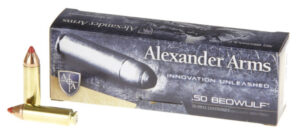
For this example we will use Alexander Arms factory 300 gr FTX .50 Beowulf ammunition from a 16” Alexander Arms factory barrel.
The sight or optic is usually mounted directly over the bore. The sight height varies depending on the system used. For an AR15, let’s assume a 2.65″ height above bore.
The sight or reticle is aligned with the target. This means the line of sight is a straight line between the sighting system and the target.
The center of the bore is 2.65 inches below this line of sight. When the rifle is fired, the bullet exits the barrel and begins to drop. If the flight of the bullet was parallel to the line of sight, the bullet would start 2.65” bellow the intended target and drop lower as it flies.
In order to prevent this, the rifle is zeroed so that the angle of the bullet’s flight crosses the line of sight.
The resulting flight of the bullet is not a straight line. It is an arc. This arc varies from cartridge to cartridge, but the flight path of every cartridge will describe an arc in flight.
The relationship between this arc and the straight line of sight to the point of aim on the target are adjusted so that when the bullet crosses the line of sight, it is at a desired range.
So here’s how it looks (refer to the image above):
- The bullet leaves the barrel 2.65 inches below the line of sight. If it strikes a target at the muzzle, it will strike 2.65″ below the point of aim.
- The bullet rises until it hits the close zero range at 21 yards. At this point, it intersects the line of sight and at that range will strike exactly on the point of aim.
- The bullet continues to rise above the line of sight until at 94 yards it reaches 4.9” above the line of sight, the highest point in its arc, and begins to drop again. During this part of its flight, it would strike a target above the point of aim.
- As the bullet drops, it will one again intersect the line of sight at 176 yards, and at that point, would strike a target directly on the point of aim.
- Beyond the 176 yard zero range the bullet continues to drop and as the range increases, the bullet will drop farther and farther below the point of aim.
- At 205 yards, the bullet has dropped to 5” below the point of aim. Any lower, and it will miss the vital zone of a deer unless a holdover or adjustment is used.
So the result is that by zeroing at 21 yards, then refining the zero at 176 yards, the hunter can hold a dead center aim on a deer and the bullet will strike the kill zone out to 205 yards.
If you want a margin to account for errors, you could tighten that zero up a little, for example, keeping the bullet within an 8” diameter kill zone. In that case, the zero would be 164 yards (23 yard close zero) rising to 4” above the line of sight at 91 yards, dead on at 164, and dropping to 4” low at 190 yards for a 190 yard point-blank range.
Ballistic Charts
Below are links to .50 Beowulf ballistic charts showing MPB ranges and zeros for hunting specific game animals.

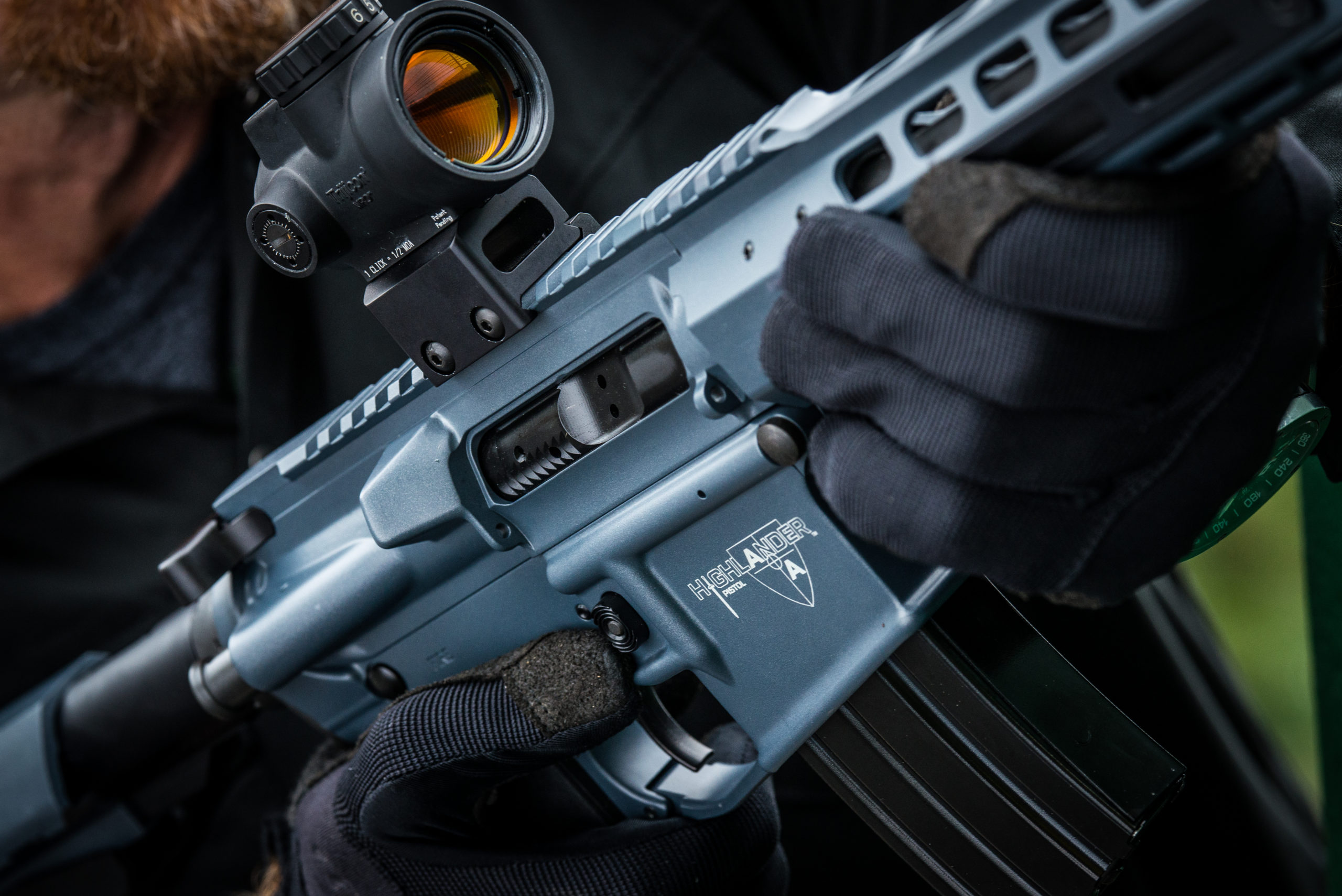

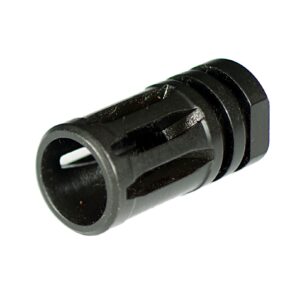
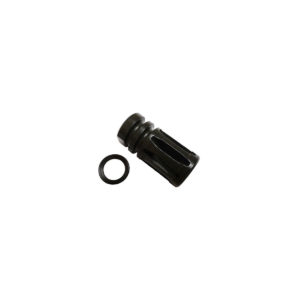
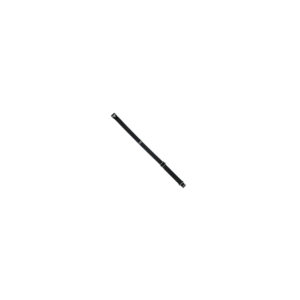
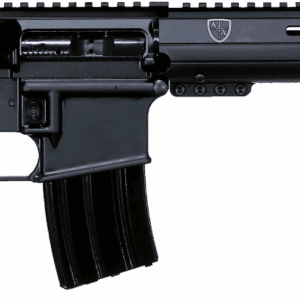
Recent Comments